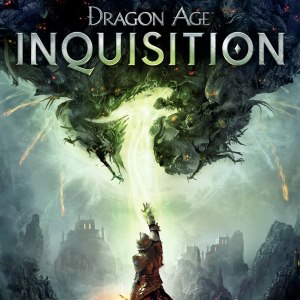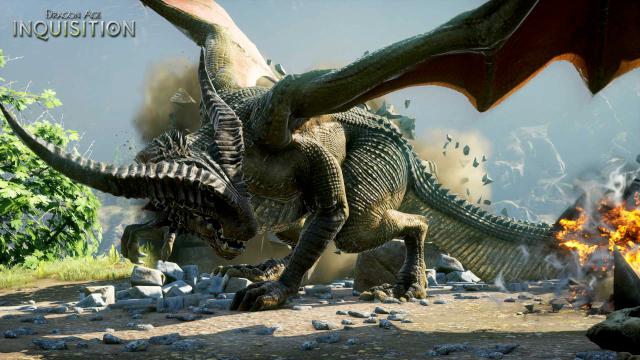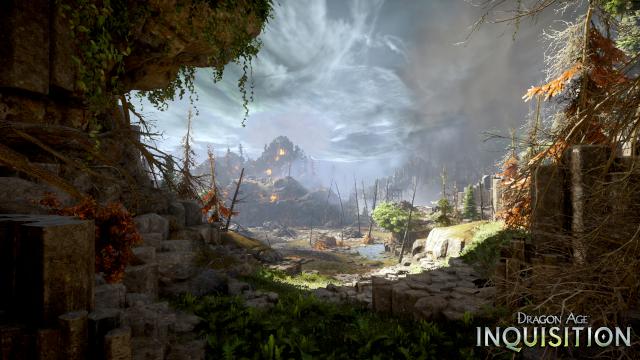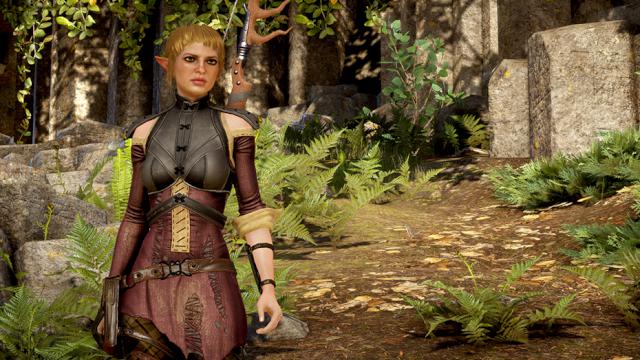
It’s taken some time to play enough of Dragon Age Inquisition to make an informed review. It’s a big game, massive in fact. The storyline is long and twisting, the locations are enormous and beautifully varied and the number of quests you’ll encounter will comfortably thunder into three figures. Comfortably. But it’s a tricky game to get into – 10 hours into the game things still haven’t really got started, and it takes an assumption or a leap of faith in terms of what’s coming up later to stick with it and carry on through the less interesting and more frustrating sections when you’re still building up your party’s level.
But let’s rewind a little. Following on from two Dragon Age games I didn’t play, Inquisition tries to pick up from what was, by all accounts, a pretty disappointing Dragon Age 2. Having not followed the series before now I won’t go into reasons for all this (mainly because I’m not too sure what they are) but will instead treat this as its own game, on a new generation, and one which other Dragon Age newbies might also be thinking of picking up. After all, it’s got dragons, and who doesn’t like dragons?

In terms of storyline you’ll be taking the role of someone who survived an attack which you can’t even remember, and has a mysterious marking on their hand which they don’t know anything about. It soon becomes apparent the mark can be used to close rifts, the tears that keep cropping up and spawning demons and nasty things around the place. The main objective is to close the massive rift in the sky, which is all set up to overpower Thedas and plunge the world into demonic hell at some point in the near future. Indeed a while into the game you might find out just how far into the future it’s going to happen, but finding that out depends on the choices you make.
And while it took three whole paragraphs, we’ve arrived at that word: choice. A word synonymous with Bioware games, and something which defines many of their great games such as the Mass Effect series. Most of what you do in Inquisition is about choosing, and as you climb up to eventually become the top dog of the Inquisition the politics of the various factions will pull you in various directions, forcing you to make decisions which will end up upsetting someone who you’d like to keep onside. The issues between the Mages and the Templars takes centre stage from a fairly early point, and at the moments when you need to choose who to side with, and then even how to work with your choice of sides, you’ll start to feel the pressure. It works well, as we’ve come to expect from Bioware.

But the majority of your time will be spent exploring the vast world. While not a massive single land mass a la Skyrim (and instead split into several smaller regions accessible from a map) each region is still huge, stretching across swamps, rivers, farmlands, mountains and all sorts of fantastic looking places. Small camps, run down villages and derelict strongholds litter the world, with someone unfriendly often nearby waiting to take a pop at your and your party. Combat is very simple though, far simpler than I expected, for example the archers simply need to hold down R2 to fire a continuous stream of unlimited arrows, with the face buttons acting as special shots once you’ve unlocked them in the skill tree. Other classes are equally simple, and with the ability to switch between characters whenever you want you’ll always be able to try out the various ways of fighting. Yes your character choice is permanent, but that doesn’t mean you’ll only use that character throughout the game. Simplified combat is countered by being able to zoom out of the battlefield and command your fighting buddies around a bit, but I kept forgetting that was even an option and looking back, I’m not sure how much of a disadvantage it was most of the time. The biggest challenges come when there are rifts involved, mainly due to the fact that while you’re doing your stuff trying to close the rift you’re at the mercy of anyone who wants to take a pot shot at you. There’s no way to defend, no way to counter attack, you just need to rely on your team mates. That’s probably the best time to be telling them what they should be doing – the rest of the time the AI does a pretty decent job of letting them kick some ass for you.
As mentioned in the intro, there’s a lot to do in Dragon Age, and with so many smaller tasks to do the story does start to get a bit stretched and watered down. While I’m sure it helps the refugees if I go and kill 10 rams to get their meet, or go and find certain herbs to allow someone to heal a few injured people, it’s all time which feels like has been put in to make the game bigger than it might’ve been. The main quests, those which involve getting your hands dirty in some fighty action, are also plentiful though and can quickly rack up to the point there you’ve got 20 or 30 quests in your list to pick from. Helpfully, the game will let you know if you accidentally manage to complete on of the quests you weren’t focussing on without breaking your concentration on what you’re actually doing, so there’s no need to worry about having to do something twice just because it wasn’t your active quest. But the huge number of quests does mean your experience is closer to that of an MMO than a large scale adventure game – definitely don’t expect Mass Effect style fighting, that’s for sure.

Then there’s the RPG elements, with bucket loads of customisation, weapon and armour crafting, herb and potion mixing, skill trees, abilities, weapon upgrades, all sorts. You can upgrade every member of your party separately, and it’s worth remembering to do so. 10 hours in it dawned on me to check my other characters, only to learn that each one had 7 or more skill points to spend. Such things make a huge difference on the battlefield, and my following encounter contained far more fire, lightning and explosions from my various styles of fighters as their upgrades finally got let off the leash. Luckily things hadn’t really got started properly at that point, so at least I realise what was going on in time for the dung to hit the extractor later on.
So Inquisition stands in an awkward position really. It’s a huge game with an enormous amount of content to explore, but it often feels relatively shallow with much of the content being incidental and clearly in place to just give you some stuff to do. The combat has the potential to be exceedingly tactical with the option to dictate where your party members should focus their efforts, but it’s very simple to actually do the fighting and sometimes feels a bit less satisfying as a result. But make no mistake about it, despite the little bits that might grate with some people, Dragon Age Inquisition is still a very good game, mixing RPG and MMO elements to provide well over 100 hours of gameplay without even trying too hard. Let the game suck you in, take the time to explore every last corner of the areas on offer looking for cool loot or material for some better armour, and take the time to talk to everyone you come across to see what their story is, and you can comfortably add another 50 hours onto that. Then if you choose, do it all again with a new character and make entirely new choices for an entirely new experience.
In terms of value for money it’s hard to beat, and you’ll have a great time while you’re at it. The new generation of consoles has served the series well, and anyone on the lookout for a huge game with choices, political unrest and dragons should be grabbing this with both hands.
Reviewed on PS4


Leave a Reply